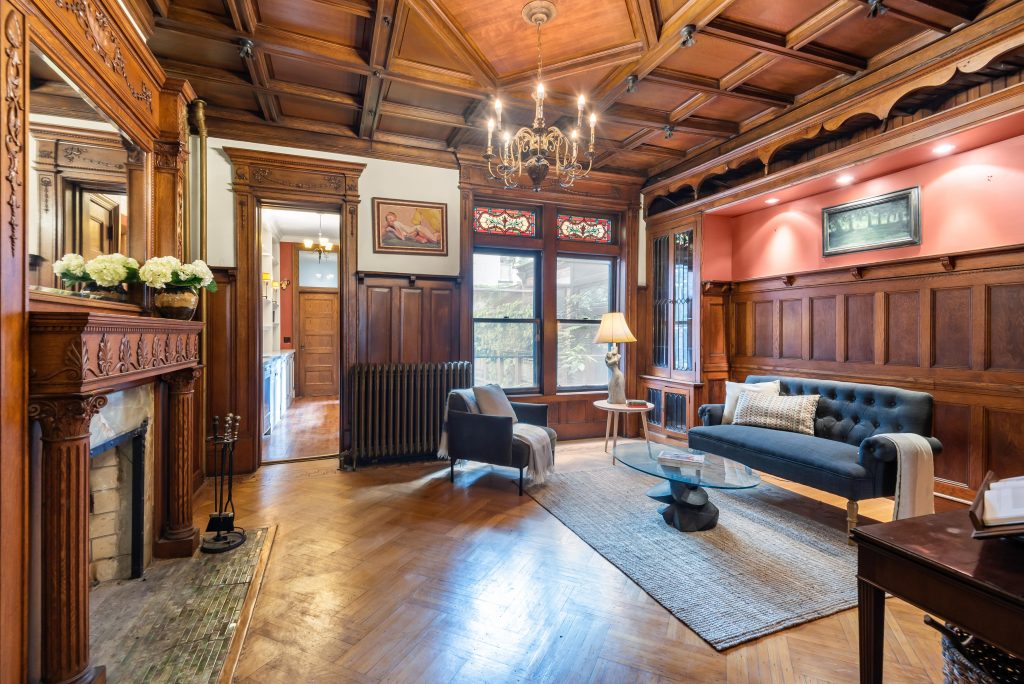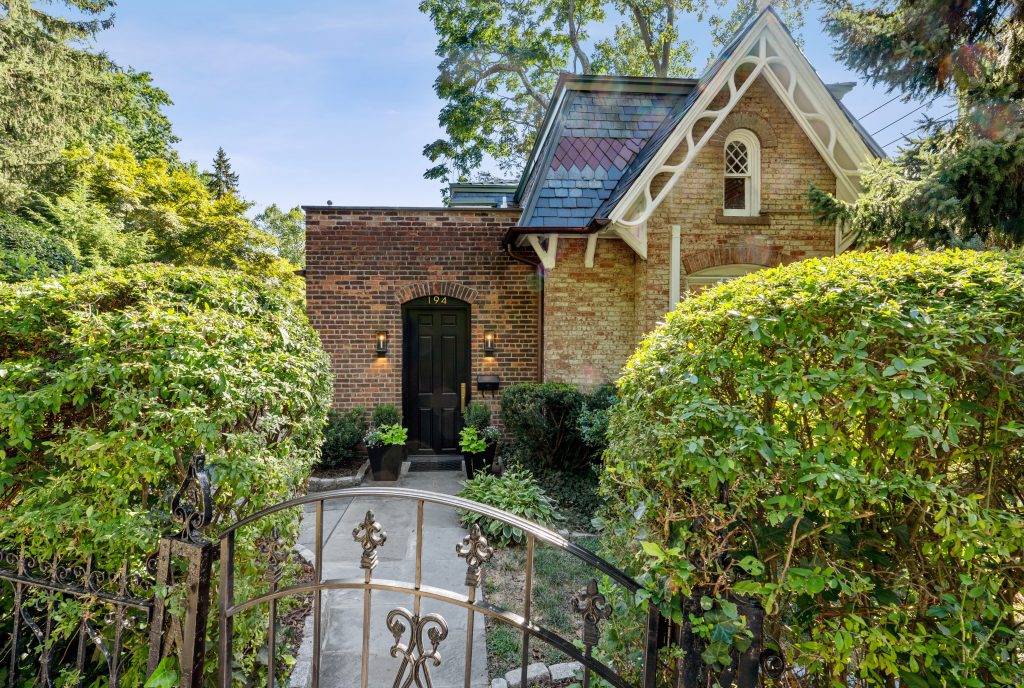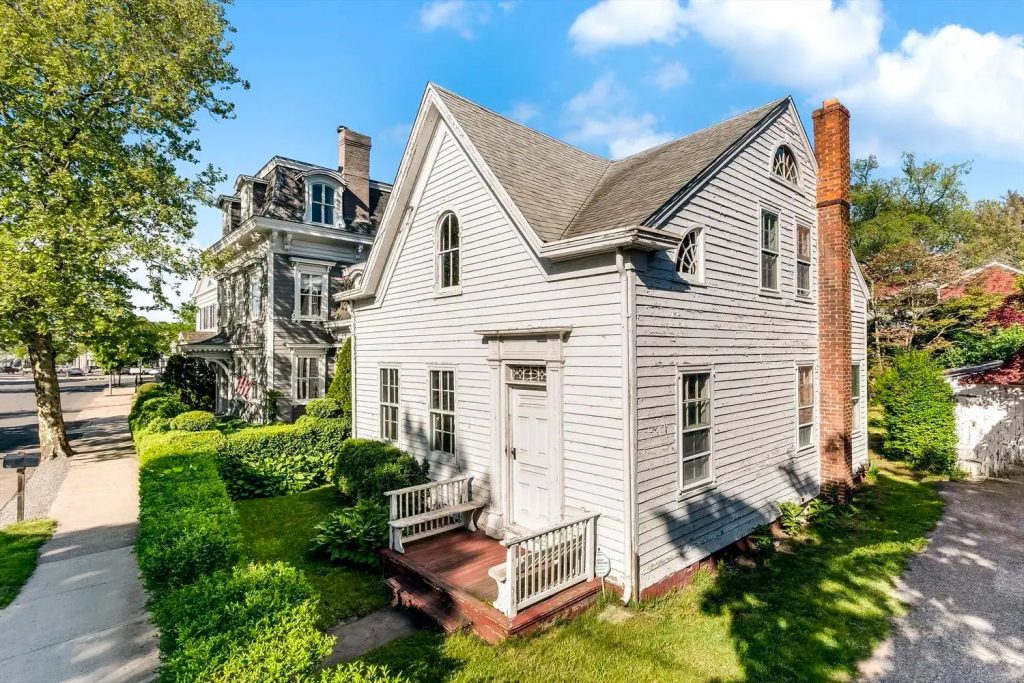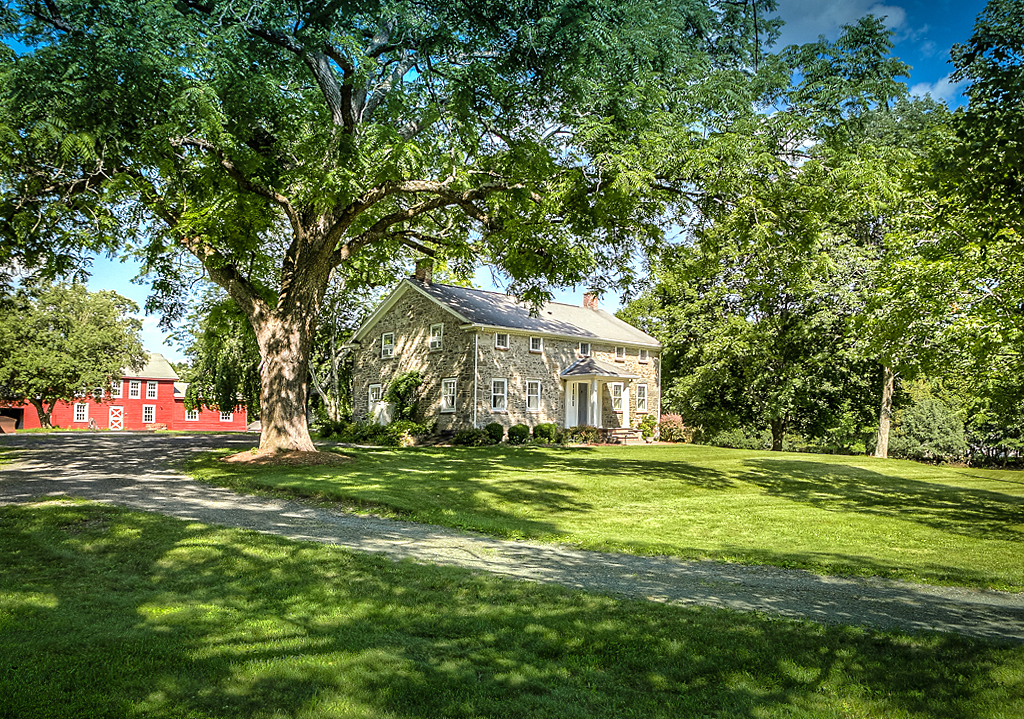Handsome Historic Houses
For Sale In and Around New York City
by INHABIT EDITORS
Live in a legend at these vintage homes across the boroughs, the Hudson Valley, and the Hamptons.
While we certainly love new ones, there’s nothing like the feeling of entering a home that has stood fifty, a hundred, or hundreds of years. More than mere walls on a foundation, an old house plays a sacred role in defining our shared sense of place, a constant throughout generations in a timeline that’s seemingly accelerating faster by the day.
From the hum of Manhattan to the slower-paced countryside, these swoon-worthy properties still stand for a reason, each offering respite from everyday life in their own unique way.
Urban history buffs know New York City grew from downtown up, leaving the northern tip of Manhattan only lightly developed until relatively recent times. Because Uptown buildings happened later than more dense areas well into their second, third, or fourth waves of development, many lasted long enough to catch the eyes of post-Penn Station-demise preservationists.
Harlem’s Mount Morris Park Historic District is the quintessential landmarked neighborhood, and few homes represent its legacy better than 9 West 120th. Dating to 1909, this landmarked south-facing townhouse retains its full period integrity, showcasing original moldings, mantels, Tiffany glass, and other period architectural details that have all been brilliantly restored. The renovation also defined four condominium residences within, two of which — 1 and 3 — are currently available. While the layouts may differ, they all share an address on a quiet, tree-lined brownstone block with countless neighborhood destinations nearby.
If you’re going to live in a neighborhood known for its proximity to — and that literally takes its name from — Brooklyn’s best-known public park, it doesn’t get much better than the blocks between 7th and 8th Avenues, which end right along Prospect Park West.
Completed in 1901, this five-bedroom, three-full bathroom Park Slope townhouse offers nearly 4,000 square feet of lavish interior, which can legally be configured as a single or two-family residence. Details like elaborate milled hardwood, stained glass, and pocket doors conspire with coffered ceilings, crown molding, and wood-burning fireplaces to fill the home with the warmth its builders intended. The garden adds another 838 square feet to enjoy outside, plus the 500+ acres of Prospect Park barely a block away.
Not everyone realizes that New York’s much-romanticized Broadway, after bisecting the island of Manhattan east to west from Bowling Green in the Financial District to its northernmost reaches, continues for another 18 miles through the Bronx and Westchester County, terminating at an equally-legendary destination: Sleepy Hollow.
Just below it, in the convenient and charming commuter village of Tarrytown, lies this c.1804 charmer. Once the gatehouse to a much larger estate, this three-bedroom, 1,708-square-foot abode channels elements of the Cottage Gothic aesthetic later championed by legendary Hudson Valley architect Andrew Jackson Downing. While the high ceilings, diamond-pane windows, and wood floors effuse all the period charm, the home’s bones have been thoroughly upgraded — there’s a new roof, multi-zone ductless air conditioning, foam insulation, and copper gutters. The kitchen is state of the art and, along with the dining room, has radiant heat.
It’s easy to forget that, for most of its history, Sag Harbor was a working village of whalers and pocket-watchmakers, baymen and bohemians — most notably, in the latter category, John Steinbeck (whose Manhattan townhouses are currently for sale). Nevertheless, a cosmopolitan hue has always cast over this storied Hamptons seaport. Whaling captains were the oil barons of their time, and their ornate homes remain a testament to their tallow fortunes. In 1859, there were gas lamps on Main Street, a novel boast considering the fact not a single village east of Brooklyn had them at the time. A decade later, the Long Island Rail Road arrived.
169 Main Street has stood to witness much of Sag Harbor’s transformation from labor hub to leisure playground. Nestled in the heart of the village on Captain’s Row, the c.1850 residence is chock full of irreplaceable period details and boasts a detached barn-style garage. But perhaps most unique is the opportunity it poses: The chance to restore an authentic Hamptons classic to your personal specifications.
Sequestered by 18 rolling acres in the shadows of the Shawangunk mountains, this classic stone manor is a refuge surrounded by country living’s every spoil. For starters, the grounds have a pool, a fishing pond, and two strikingly well-maintained old barns, offering four horse stalls. Then there’s the home itself, a mid-19th century gem resplendent in stone, hand-hewn beams, and respectful renovations. Among the welcome additions are a modern kitchen and three spa-quality bathrooms.
As if the home (and price) wasn’t good enough, the location is downright perfection for a weekend escape. It’s easily accessible from points throughout the tri-state area via I-84, and train service on the Metro North/NJ Transit-shared Port Jervis line is available at Otisville. And within a 20-mile radius, one can enjoy hiking and rafting, shopping the boutiques of Sugarloaf or the outlets of Woodbury Commons, a day at LEGOLAND New York Resort, or tasting the orchards, distilleries, breweries, and wineries of Warwick.
Oneonta is situated what might be darn near the geographic middle of our unusually-shaped state, just over three hours from Manhattan or Rochester and a mere 80 miles from Albany. Right outside the beloved railroad junction-turned-college town on the Catskills’ western slopes, you’ll find a compound for sale truly unlike any other.
Comprised of 260 acres, Emmons Farm has remained in same-family ownership since Asa Emmons staked his claim on this land nearly two centuries ago — until now. By 1840, a tavern had been built on the site, followed by a schoolhouse a decade later. Today, you’ll find multiple structures on the property, including the sizable four-family carriage house and the c.1906 Kendrick Morgan House, the latter reimagined as a six-family luxury apartment complex. The historic granary is now a duplex, the greenhouse a three-bedroom home, the feed house a one-bedroom, and the manure house a stylish three-story, two-bedroom cottage that hardly stinks. Each has a garage, along with tranquil views of the rolling grounds. We won’t spoil the rest, so hit the listing and see for yourself.






